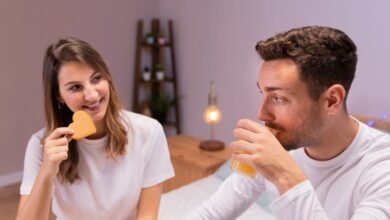What is Hip Pain cause, treatment?

Hip pain is a common discomfort that affects numerous individuals, often causing a range of limitations in daily activities. It refers to any pain, discomfort, or inflammation that occurs in or around the hip joint, an intricate structure that connects the pelvis to the femur. This discomfort can stem from various sources, including injuries, overuse, underlying medical conditions, or degenerative changes associated with aging. The intensity of hip pain can vary, ranging from a dull ache to sharp, debilitating pain, impacting an individual’s ability to walk, stand, or engage in physical activities. Understanding the nature of hip pain, its causes, and available treatment options is pivotal in managing and alleviating this condition effectively.
The hip joint is fundamental to mobility and bears a significant amount of the body’s weight during movement. Any discomfort or restriction in this area can hinder daily routines, affect posture, and lead to persistent discomfort. Whether arising from sudden injuries, chronic conditions like arthritis, or overuse, hip pain can manifest in various forms and significantly impact an individual’s quality of life. Therefore, gaining insights into the nuances of hip pain, its various types, and how it affects daily activities is essential for seeking appropriate care and adopting strategies to mitigate this discomfort.
Understanding the Anatomy of the Hip
The hip joint is a complex structure composed of bones, ligaments, tendons, and muscles, designed to support the body’s weight and facilitate movement. Understanding its anatomical composition is fundamental in comprehending the potential sources of pain and discomfort.
Common Causes of Hip Pain
Hip pain can arise from various sources, often due to:
- Osteoarthritis: Wear and tear of the hip joint over time can lead to osteoarthritis, causing pain, stiffness, and reduced range of motion.
- Injuries: Fractures, dislocations, strains, and sprains from accidents or overexertion can result in acute hip pain.
- Bursitis: Inflammation of the fluid-filled sacs (bursae) that cushion the hip joint can cause pain, particularly with movement.
- Tendonitis: Irritation or inflammation of the tendons surrounding the hip joint due to overuse or injury can lead to pain and discomfort.
- Hip Impingement: A structural issue where the bones of the hip joint rub or pinch together, causing pain and reduced mobility.
- Labral Tears: Injury to the ring of cartilage (labrum) surrounding the hip socket can result in pain or a feeling of locking in the hip.
- Hip Dysplasia: A condition where the hip socket doesn’t fully cover the ball portion of the upper thighbone, leading to instability and discomfort.
- Sciatica: Compression or irritation of the sciatic nerve can cause radiating pain from the lower back through the hip and down the leg.
- Muscle Strains: Overstretching or tearing of muscles supporting the hip due to sudden movements or overuse.
- Inflammatory Conditions: Conditions like rheumatoid arthritis or ankylosing spondylitis can cause inflammation.
Understanding these common causes is crucial for accurate diagnosis and appropriate treatment of hip pain.
Read More: Tapping Into Your Genes for Health Purposes
Types of Hip Pain
Can manifest in various forms, indicating different underlying issues:
Sharp Pain: Often associated with sudden injuries or acute trauma to the hip, such as fractures or dislocations. Sharp pain can also arise from muscle strains or ligament tears.
Dull Ache: Common in conditions like osteoarthritis or bursitis, a persistent, low-level discomfort that might be constant or intermittent.
Radiating Pain: This type of pain might not be confined to the hip area but can spread down the thigh, possibly indicating issues like sciatica or nerve compression.
Groin Pain: Pain felt in the groin area can be linked to problems within the hip joint itself, such as hip arthritis or labral tears.
Limping Pain: Pain causing an alteration in gait, leading to a limp, often associated with injuries or structural issues affecting the hip joint.
Night Pain: Discomfort that intensifies during the night, commonly seen in inflammatory conditions like arthritis.
Stiffness: A feeling of reduced mobility or difficulty in moving the hip joint, usually associated with arthritis or bursitis.
Sudden Locking or Catching Sensation: Indicative of possible labral tears or structural abnormalities within the hip joint.
Understanding the different types and their characteristics is essential for proper diagnosis and targeted treatment approaches tailored to the specific condition.
Symptoms and Signs of Hip Pain
Identifying the symptoms and signs associated is pivotal for timely intervention and effective management. This section highlights common indicators and red flags indicative of underlying hip issues.
Diagnosing Hip Pain
Diagnostic procedures, including physical examinations, imaging tests, and medical history assessments, play a critical role in determining the root cause, guiding subsequent treatment decisions.
Treatment Options for Hip Pain
Exploring a spectrum of treatment modalities, including medications, physical therapy, and injections, presents diverse paths to alleviate hip discomfort and improve quality of life.
Lifestyle Changes and Home Remedies
Incorporating lifestyle adjustments and adopting home remedies can significantly contribute to managing, offering a holistic approach to alleviate discomfort.
Preventive Measures for Hip Pain
Prevention is pivotal in mitigating the risk. Implementing preventive measures, such as exercise routines and ergonomic practices, can help maintain hip health.
Impact of Hip Pain on Daily Life
Including work, exercise, and social interactions, highlights the importance of managing and treating the condition effectively.
Hip Pain in Different Age Groups
Exploring how hip pain presents in various age groups sheds light on specific considerations and treatment approaches tailored to different life stages.
Exercises and Physical Therapy
Engaging in specific exercises and physical therapy can aid in strengthening the hip joint and surrounding muscles, contributing to pain relief and improved mobility.
Surgical Interventions for Hip Pain
In cases where conservative treatments are ineffective, surgical interventions become necessary. Understanding these procedures and their implications is vital.
Alternative Therapies for Hip Pain
Exploring alternative therapies, such as acupuncture or chiropractic care, offers additional options for individuals seeking complementary approaches to manage.
Read More: 9 Best Therapies Used in Drug Rehab Programs
Conclusion
Hip pain is a prevalent issue that can significantly impact an individual’s daily life and mobility. Understanding the multifaceted nature of hip pain, including its causes, types, symptoms, and available treatments, is crucial for effective management and relief.
The causes of hip pain vary widely, from injuries and overuse to chronic conditions like arthritis. Recognizing the different types of hip pain—whether sharp, dull, radiating, or associated with specific movements—helps in identifying underlying issues and guiding appropriate treatment.
Diagnosing often involves a comprehensive approach, including physical examinations, imaging tests, and a review of medical history, ensuring an accurate assessment of the condition.
Treatment options range from conservative measures like medication, physical therapy, and lifestyle adjustments to surgical interventions when necessary. Moreover, incorporating preventive measures and engaging in exercises targeted at strengthening the hip joint play a vital role in managing and reducing .
impact on daily activities and its presence across different age groups underline the importance of timely intervention and tailored treatment approaches.
In conclusion, knowledge about the causes, symptoms, and treatment options for hip pain empowers individuals to take proactive steps in managing this discomfort and improving their overall quality of life.
FAQS
What are the primary causes of hip pain?
Hip pain can stem from various factors, including injuries, arthritis, overuse, and structural problems.
How is hip pain diagnosed?
Diagnosis often involves physical examinations, imaging tests, and a review of medical history to identify the root cause.
Are there non-surgical treatments available for hip pain?
Yes, non-surgical options like medication, physical therapy, and lifestyle changes are often recommended for managing.
Can hip pain significantly impact daily activities?
Absolutely, hip pain can restrict movement and impact work, exercise, and social interactions.
Are there preventive measures for hip pain?
Certainly, engaging in exercises, adopting ergonomic practices, and maintaining a healthy lifestyle can help prevent.







